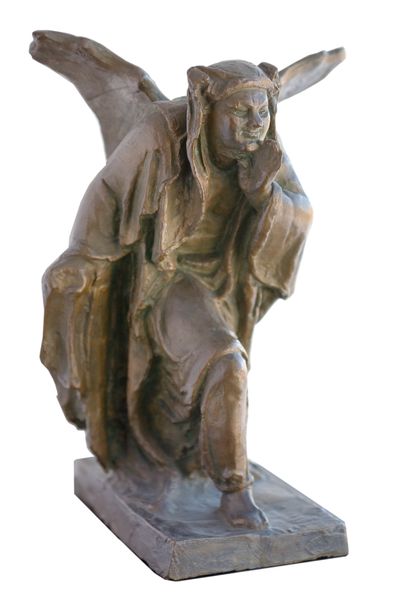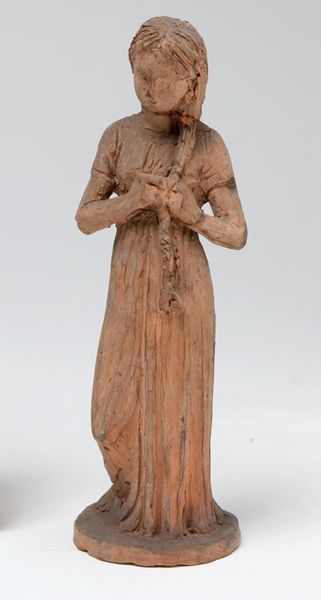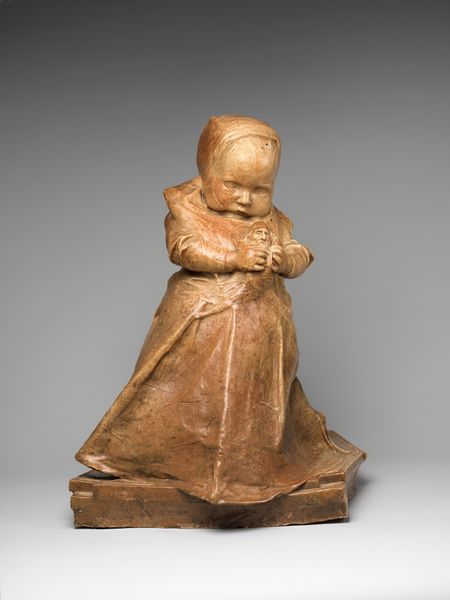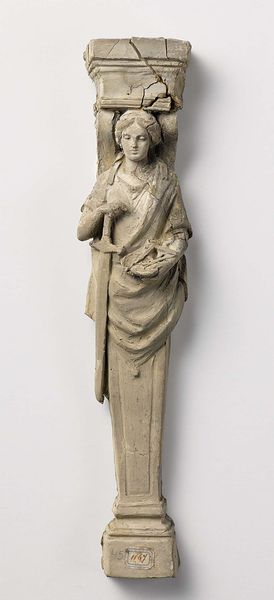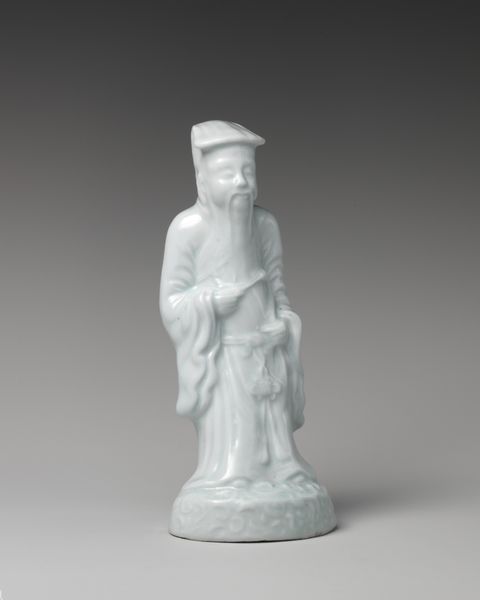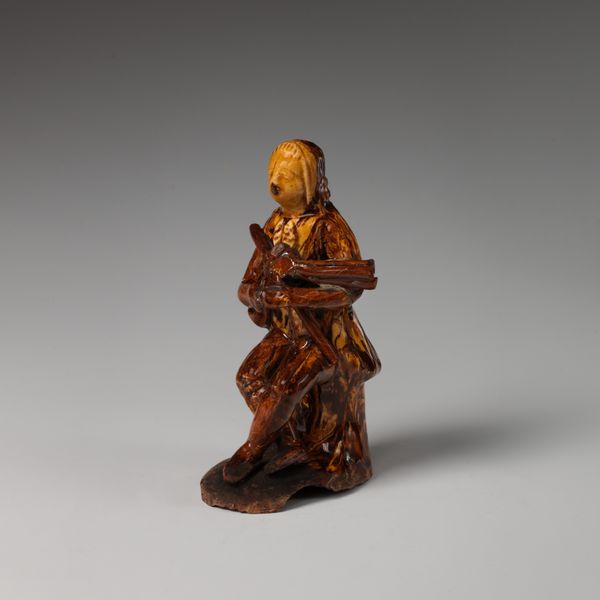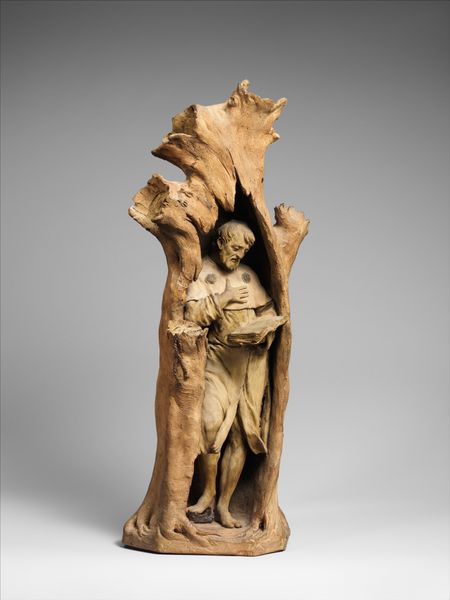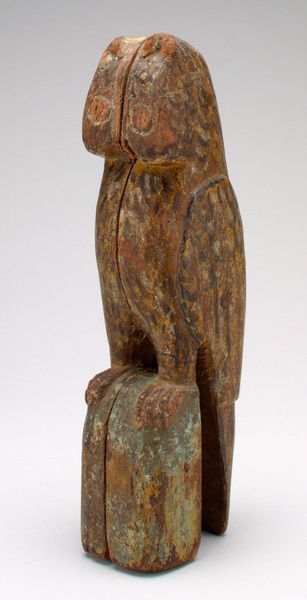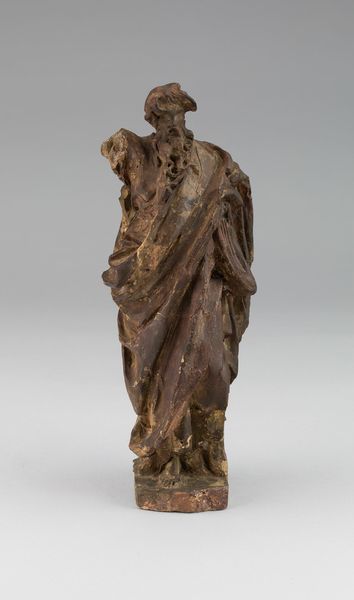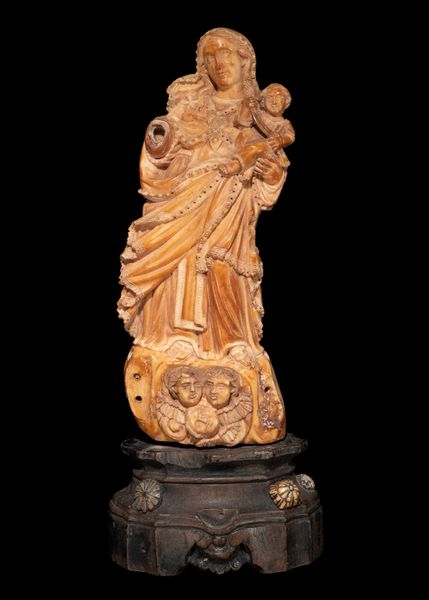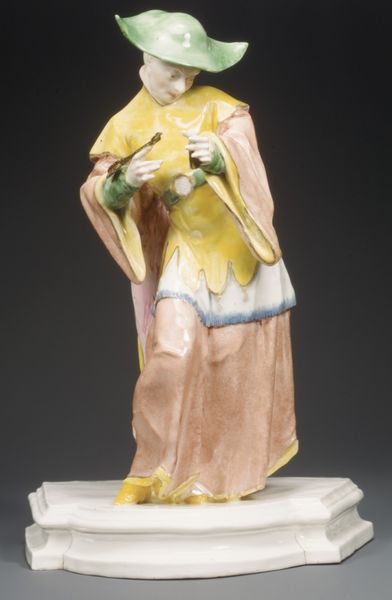
Grundtvig og livskilden. Præsten og salmedigteren N.F.S. Grundtvig, knælende 1912 - 1914
0:00
0:00
carving, sculpture
#
portrait
#
carving
#
sculpture
#
sculpture
#
realism
Dimensions: 54.2 cm (height) x 28 cm (width) x 35 cm (depth) (Netto)
Curator: Standing before us is Niels Skovgaard’s sculpture, "Grundtvig og livskilden. Præsten og salmedigteren N.F.S. Grundtvig, knælende", created between 1912 and 1914. Editor: The earthy tones and the posture of the figure give it a really somber feel, almost melancholic. Curator: Precisely. Skovgaard's use of sculpture, specifically carving, provides an interesting lens to view Grundtvig’s role within the cultural landscape of the time. He wasn’t simply a clergyman; he was a pivotal figure in shaping Danish national identity, deeply involved in educational reforms and the folk high school movement. Editor: I am struck by the texture. You can really see the tool marks left from the carving process; there’s very little refinement, as if Skovgaard sought to emphasize the hand that made it, which, in a way, reflects the work that Grundtvig himself promoted. And note that there is more than meets the eye—the relief carvings that form the base of this portrait add complexity to its narrative and material make-up. Curator: The choice of material certainly grounds the subject. It brings a sense of the common man and his connection to land, community and collective memory. We might think of the Arts and Crafts movement's principles too, placing value in labor and handicraft amidst industrialization. Editor: There's an intriguing tension. While the sculpture depicts Grundtvig in a humble, almost servile, kneeling position—reflecting the divine wellspring—the sharp lines in his facial expression betray an intensity, perhaps a barely contained zeal. Curator: Indeed. The materiality and sculptural form elevate Grundtvig beyond just a portrait of a clergyman, acknowledging his importance as a cultural and spiritual force in Denmark, who encouraged critical consciousness and community action. Editor: Looking at this piece, you have to respect the synthesis of form and content and reflect on what the artist tries to tell about subject. Curator: A successful synthesis indeed, providing an interesting portal into understanding this central Danish figure and Skovgaard’s artistic practice.
Comments
No comments
Be the first to comment and join the conversation on the ultimate creative platform.

